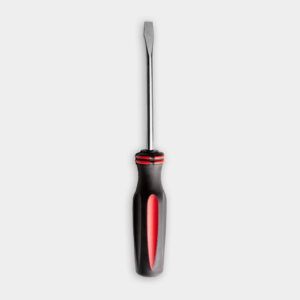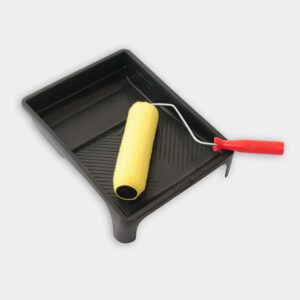We may be compensated if you purchase through links on our website. Our team is committed to delivering honest, objective, and independent reviews on home products and services.
Painting tile is an affordable way to update your bathroom without the expense and hassle of a full renovation. By following the right steps, you can turn outdated tiles into a modern, clean finish that lasts. In the above video, Ask This Old House expert painter Mauro Henrique helps a homeowner transform outdated avocado green tiles into a fresh, white finish.
The Process of Painting Tile
Before diving into the project, understand what painting tile involves: thorough preparation, careful application, and using water-resistant products designed for bathroom environments.
Is Painting Bathroom Tiles a Good Idea?
Painting bathroom tiles can be an excellent solution for outdated or discolored surfaces. It’s an affordable option that doesn’t involve the time and mess of replacing tiles. When it’s done right, it can dramatically change your bathroom’s look.
Just keep in mind that using the right materials and techniques is key to making the finish last, especially in a wet and humid space like a bathroom.
Choosing the Right Paint for Bathroom Tiles
For the best results, use epoxy or acrylic paint specifically designed for bathroom tiles. These types of paints are durable, water-resistant, and can handle the frequent cleaning and moisture that bathrooms endure. Epoxy acrylic paint, in particular, adheres well to tile surfaces and offers the longevity needed for a high-moisture environment.
Preparation: The Key to Success
As with any paint project, preparation is everything. In the video, Henrique emphasizes that 85% of a painting project is preparation. Proper prep leads to a professional-looking finish and long-lasting results. This includes thoroughly cleaning the tiles, sanding the surface for better paint adhesion, and protecting the surrounding area from accidental paint splashes.
Materials and Tools for Painting Tiles
To get started, gather the following materials and tools:
- 320-grit sandpaper
- Cleaning solution
- Epoxy acrylic paint
- Flat painter’s tool or putty knife
- Foam roller covers
- Microfiber cloth
- Microfiber roller covers
- Paintbrush
- Paint roller
- Painter’s tape
- Paint tray
- Plastic drop cloths
- Random orbital sander
- Resin paper
- Respirator
- Screwdriver
- Wet-dry vac with HEPA filter
- Window fan
Step-by-Step Guide to Painting Bathroom Tiles
Follow these steps to transform your bathroom tiles:
1. Remove Obstacles
Begin by removing any wall plates, fasteners, or hardware that could get in the way.
2. Clean and Prepare the Tile Surface
Thorough cleaning helps with paint adhesion. Use a cleaning solution and a microfiber cloth to scrub the tiles thoroughly, removing any dirt, grime, or soap scum. After cleaning, allow the tiles to dry completely before moving on to the next step.
3. Tape Off and Protect the Area
Apply painter’s tape to the edges, fixtures, and walls to keep paint from getting where it doesn’t belong. Cover sinks, toilets, and floors with plastic drop cloths or resin paper to protect them from dust and paint drips.
4. Sand the Tiles
Sanding creates a slightly rough surface that helps the paint adhere better. Using 320-grit sandpaper, sand the surface of the tiles to create a rough texture that will help the paint adhere. For larger areas, a random orbital sander can save time. Don’t forget to sand grout lines as well.
5. Wipe Down and Vacuum Dust
After sanding, wipe the tiles with a microfiber cloth to remove dust. Then, use a wet-dry vac with a HEPA filter to clean up any remaining debris.
6. Apply the Paint
Mix your epoxy acrylic paint according to the manufacturer’s directions. Begin by cutting in around the edges with a paintbrush. Then, use a foam roller to apply the paint in small sections, working in W-shaped strokes to prevent lap marks.
For the best coverage, especially over grout lines, follow up with a microfiber roller for the second coat.
7. Let It Dry
Allow the first coat to dry according to the paint manufacturer’s instructions, usually around 6–8 hours. After the second coat, let the tiles cure for the recommended time before using the bathroom, typically 48–72 hours.
Tips for a Professional Paint Finish on Tile
To achieve the best results when painting your bathroom tiles, follow these tips:
- Allow adequate drying time between coats and before using the bathroom.
- Apply thin, even coats rather than one thick coat to prevent drips and achieve proper drying.
- Regularly maintain the painted surface by cleaning gently and avoiding abrasive cleaners.
- Use a clear topcoat for added durability in high-moisture areas.
- Work in a well-ventilated area and wear appropriate safety gear, including a respirator.









